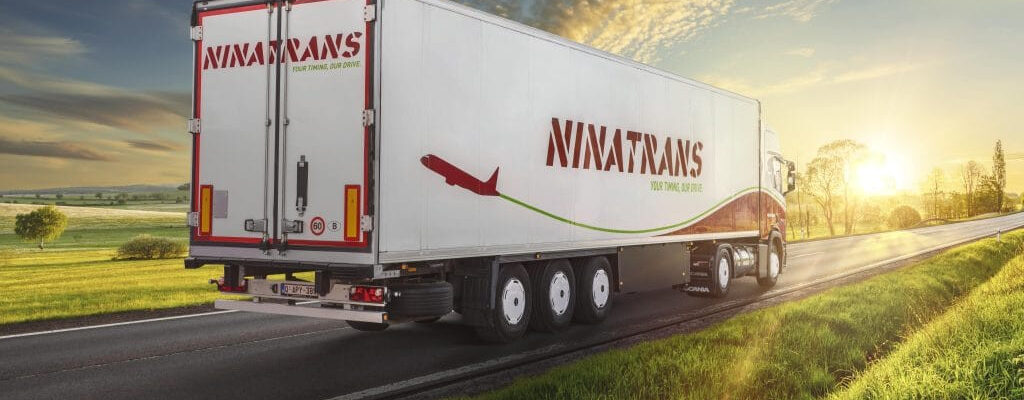A practical path to decarbonisation of road feed services
Europe’s air freight supply chain faces a tougher test: how to decarbonize the trucks that connect major airport hubs to regional freight terminals. Road feeder services (RFS) form the hidden backbone of the air freight sector, moving cargo over short and medium distances where aircraft cannot. Yet the diesel engines that power them are now within the reach of regulators, customers and investors alike.
Average emissions of RFS operations range between 80 and 120 grams of CO2 per tonne-kilometre. With EU targets and the expansion of the Emissions Trading System to include road transport (ETS2) on the horizon, operators are under increasing pressure to shift away from conventional fuels, such as diesel.
“The challenge is not decarbonisation, but how quickly we can achieve it without breaking the economic model,” said Benny Smits, CEO of Nenatrans. The practical path for zero-emission trucks remains uneven across Europe. Electric heavy goods vehicles are available, but charging and refueling facilities are few, especially for the cross-border routes that make up a large part of the RFS network. Hydrogen trucks, with a longer range, are still under development, but it will take several years before mass production, and there are still many challenges to be addressed.
Carriers cite long wait times for vehicle orders and limited power grid capacity to support fleet-wide electrification. Even large operators with dedicated airport contracts are struggling to expand pilot schemes beyond a handful of units. “We have a recharging station large enough for two trucks,” Smits explained. “There’s no way to electrify everything yet.”
The bottleneck reflects a broader imbalance between ambition and achievement. While national governments have pledged to expand high-capacity freight corridors, only a small portion of the required infrastructure is operational. Meanwhile, hydrogen supply chains are still in their infancy, with refueling costs still prohibitive outside a few industrial clusters.
The economy is moving towards electricity
Despite these obstacles, the financial logic of the transition has begun to shift. The tax benefits that diesel has long provided to transport companies are being phased out in many member states, while carbon pricing and tougher emissions standards are expected to raise operating costs further over the next decade.
Taxes on fossil fuels could add several thousand euros per truck per year by the late 2020s. Meanwhile, the prices of batteries and components for electric trucks are falling as production increases. Some predict that the balance between the two could reach an “economic tipping point” within three years, when a zero-emission vehicle becomes cheaper to operate over its life than its diesel equivalent.
However, replenishing the fleet will take some time. High capital costs, long repayment periods, and continued uncertainty about future resale values continue to deter small operators. For now, most are betting on a fuel mix – combining battery-electric trucks and LNG for regional routes, while reserving diesel and hydrotreated vegetable oil (HVO) for long-haul segments until infrastructure improves.
Competitive pressure and global supply chains
Europe’s slow progress also exposes its manufacturing companies to competitive risks. Chinese truck makers have begun exporting low-cost electric models, said to be priced at about a third of their European counterparts. Even with import duties, these units can undermine local products.
Smits expressed his belief that “China may play an important role in our industry.” The gap in manufacturing costs – nearly €100,000 versus €300,000 per unit – has raised concerns in Brussels about industrial competitiveness and the need for targeted incentives to support domestic production.
In the absence of a coordinated policy, the EU may end up relying on imported vehicles as it seeks to secure its supply chain. This debate reflects the broader energy transition, where cost, sovereignty and sustainability objectives often go in different directions.
Cooperation, transparency, and the long road ahead
Decarbonizing air trucking will require collaboration across the value chain. Airlines, freight forwarders, airports and carriers will need to align procurement, data reporting and investment in infrastructure to make meaningful progress.
Operators are also under pressure from customers to quantify and disclose transport emissions in line with environmental, social and governance reporting frameworks. Those who can demonstrate measurable reductions will win new contracts as major shipping companies include carbon metrics in logistics tenders.
“The air cargo community must treat sustainability as part of its business model, not as an add-on,” Smits concluded. Speakers agreed that this transformation will redefine how air cargo service capacity is planned, priced and operated – marking the beginning of a long but irreversible transformation in air cargo logistics in Europe.
